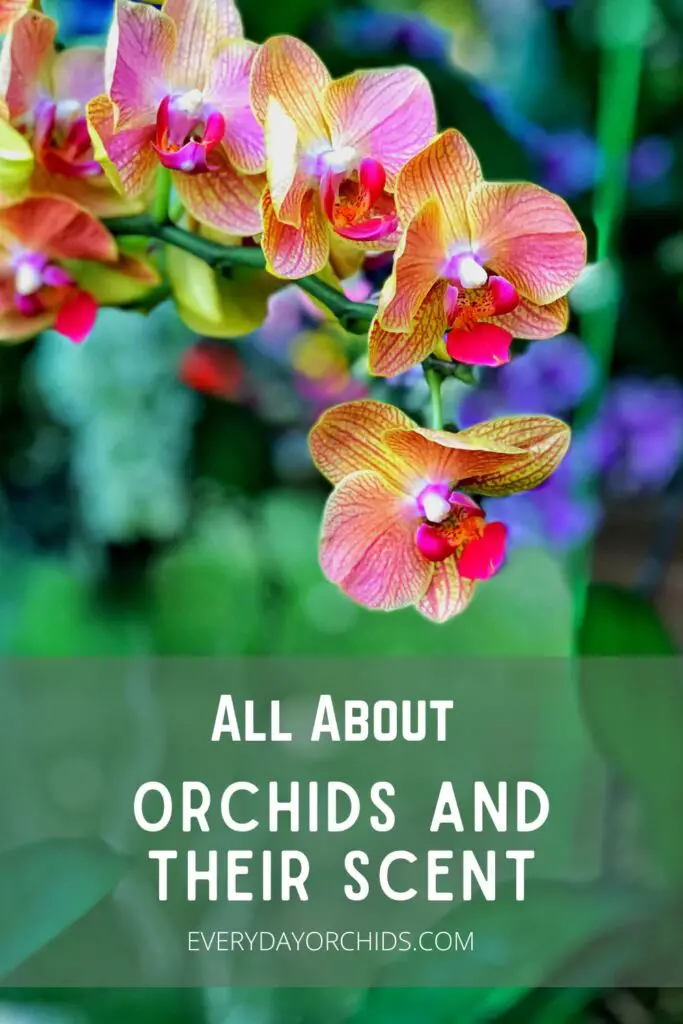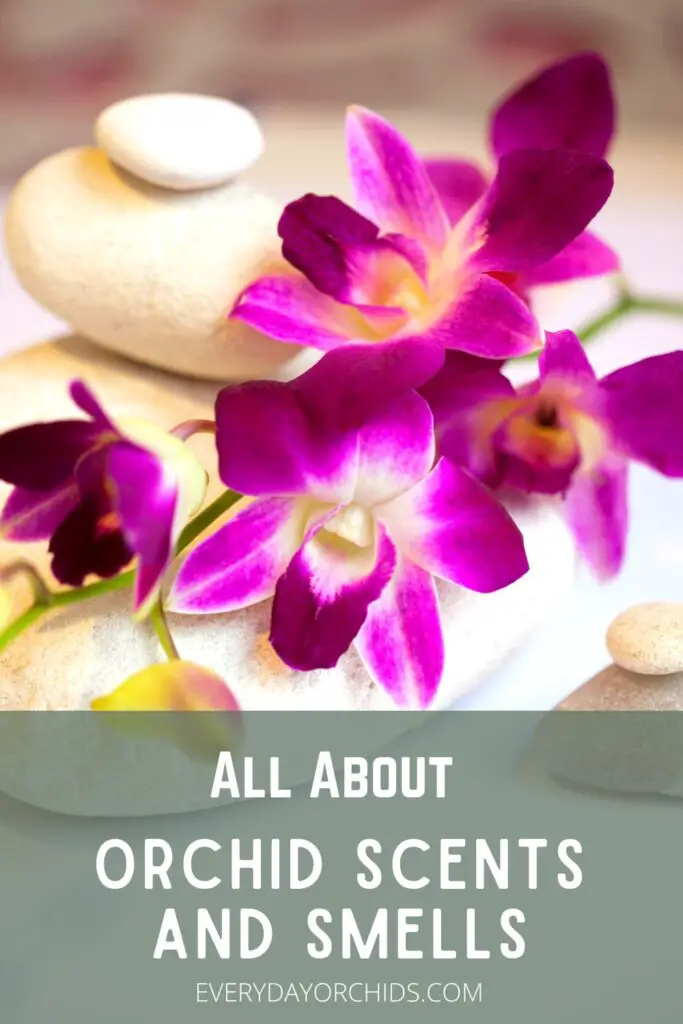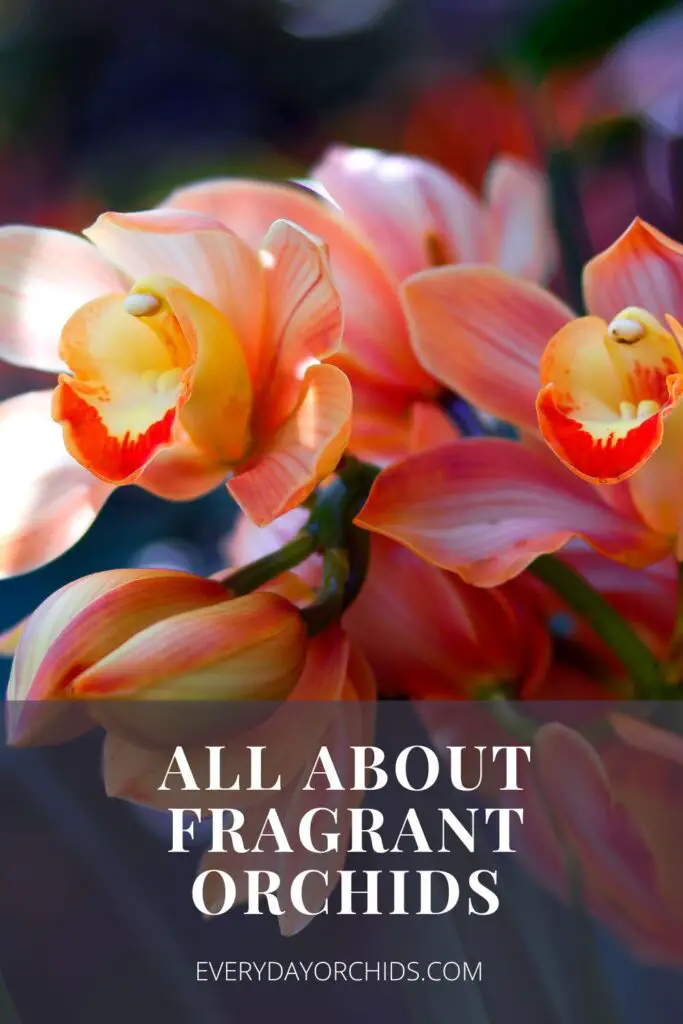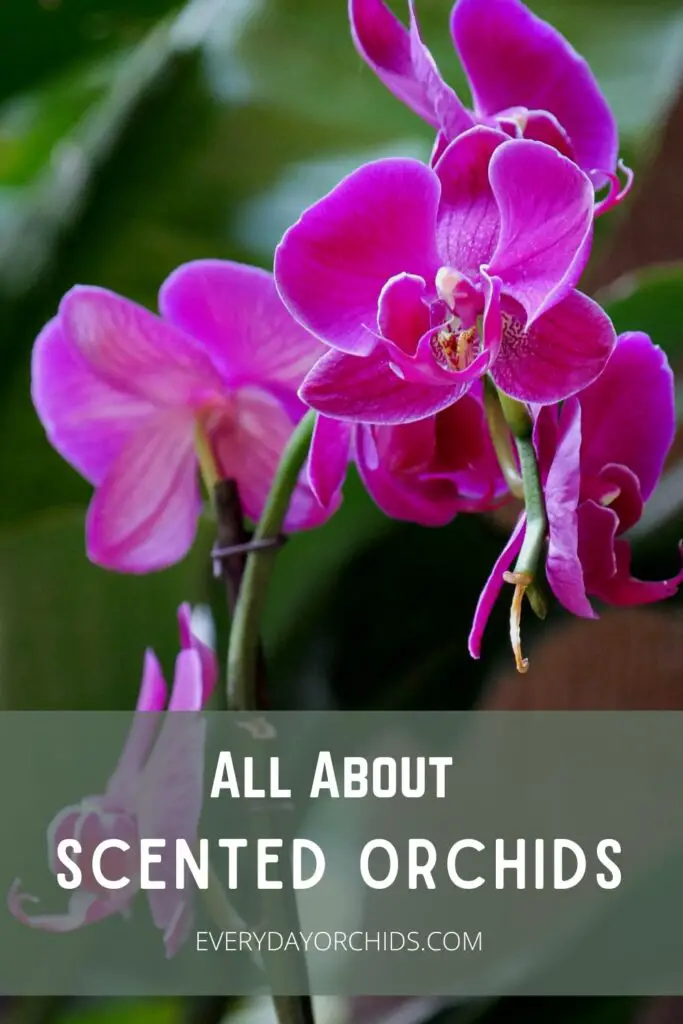The idea of orchid scent may seem like a strange concept, especially if you’ve never noticed any sort of fragrance coming from your orchid. You may have also heard that orchid flowers don’t have any scent, but is this true? If not, what kind of scents and smells can you expect from your orchid blooms?
Orchids that grow in the wild do have a scent. However, many of the popular Phalaenopsis orchids were previously sold unscented. This led to a misconception that orchids do not have a smell. These days, unscented orchids are being propagated with scented orchid species to produce fragrant orchids.
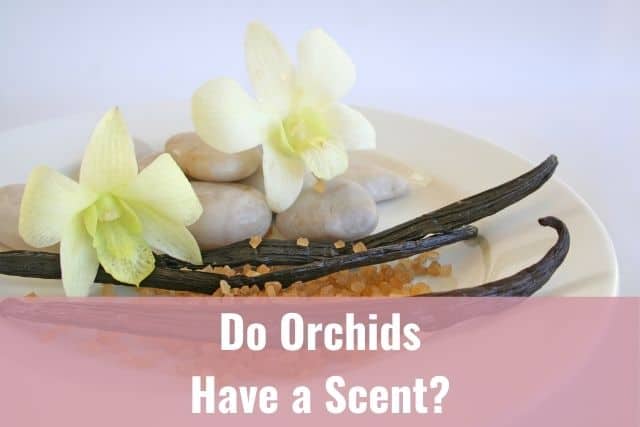
Over 30,000 species of orchids exist, and the majority are scented. Keep reading to learn about the purpose of an orchid’s scent, which species of orchids are recognized for their fragrance, and what it means if your orchid smells bad.
Please note that these links are affiliate links and as an Amazon Associate, I earn from qualifying purchases. Purchases made through affiliate links in this post may generate commissions at no additional cost to you. Use this link for a free or discounted Amazon Prime trial. Thank you for your support!
Table of Contents
Why Does My Orchid Smell?
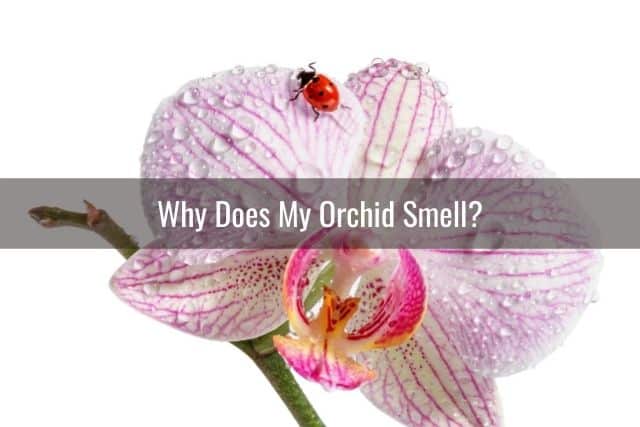
Orchids have many adaptations to help them survive in their natural habitats. Their large orchid roots can quickly absorb water and nutrients, while secondary stems and pseudobulbs store water during times of drought.
The orchid’s light, tiny seeds can be carried by the wind, ensuring the plants will be able to reproduce. To help spread the seeds and reproduce, some orchids attract insects. Scent is one technique orchids use to entice insects.
Since not all insects respond to the same scent, orchids have evolved to have different strategies to attract insects and other pollinators.
These strategies are not limited to just scent either. Timing is also key. Most orchids release a scent in the mornings when insects are most active. This increases their chances for attracting insects. Some orchids are pollinated by nocturnal insects, such as moths. These orchids release their scent at night.
Which Orchids Have a Scent?
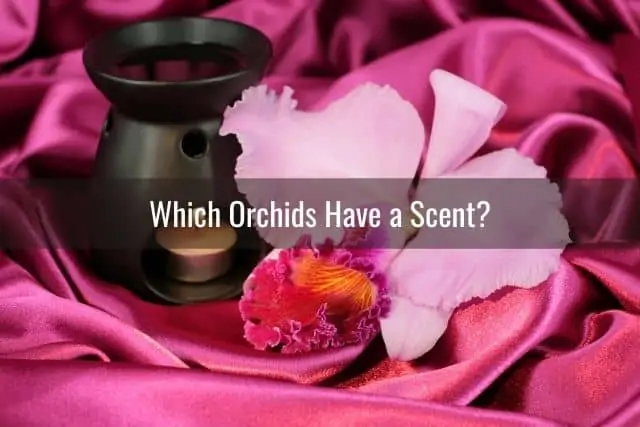
In the wild, some orchids rely on bright colors and their appearance to attract insects. These orchids do not have a scent.
Some orchid species have evolved to look like food, while other species produce flowers that look like an insect’s mate. These adaptations have allowed these orchids to attract insects that would then take pollen and seeds with them.
However, most wild orchids rely on a fragrance to attract insects. One could say that most orchids have a scent. You are most likely to buy an orchid from a nursery though, rather than dig up a wild orchid. Let’s explore some popular scented orchid varieties.
- Cattleya. You will be able to easily find fragrant Cattleya orchids as this genus has many species of fragrant orchids. Dwarf Cattleya, like Walkeriana, which has vanilla and cinnamon notes, are increasingly popular.
- Oncidiums. Hybrids like Twinkle Fragrance Fantasy and Sharry Baby are readily available. Twinkle Fragrance is usually described as having a vanilla scent. Some say that Sharry Baby smells like chocolate, while others say its scent is closer to vanilla.
- Dendrobiums. Dendrobium anosmum has a fruity fragrance, while Dendrobium nobile’s scent is floral.
- Brassavola. Orchid species of this genus also have pleasant scents. If you want a lily-of-the-valley scent, look for Brassavola nodosa. For a sweet fragrance, look for Brassavola Little Stars.
Even if you are a beginning grower, you will have success with most orchids of these genera.
Most Fragrant Orchids
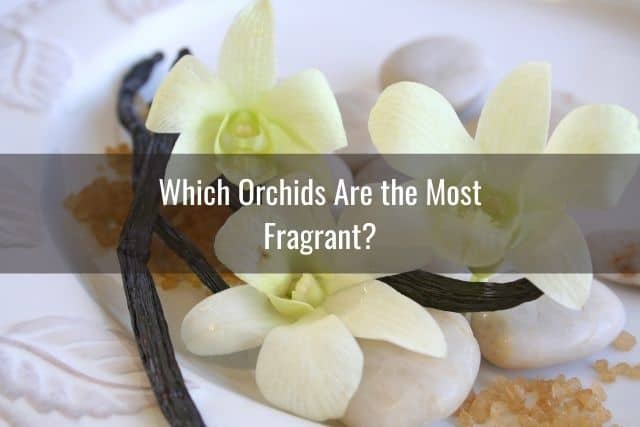
So, which orchids are the most fragrant? This is a difficult question to answer for several reasons. First, you might like the fragrance of an orchid that someone else hates. Second, not all flowers of a species will have a strong smell. It might be that an orchid that smells nice in the store will lose its fragrance when it comes to your house.
Also, if you buy an orchid that is difficult to grow, then the fragrance will only last as long as your plant. Luckily, most of the flowers discussed in the previous section have a strong fragrance and are relatively easy to grow.
If you have some orchid experience under your belt and feel ready to take on a more challenging orchid, these orchids are known for their strong fragrance:
- Miltoniopsis orchids
- Rhyncholaelia glauca
- Cycnodes Wine Delight
- Vanda denisoniana
- Sedirea japonica
Why Does Your Orchid Smell Bad?
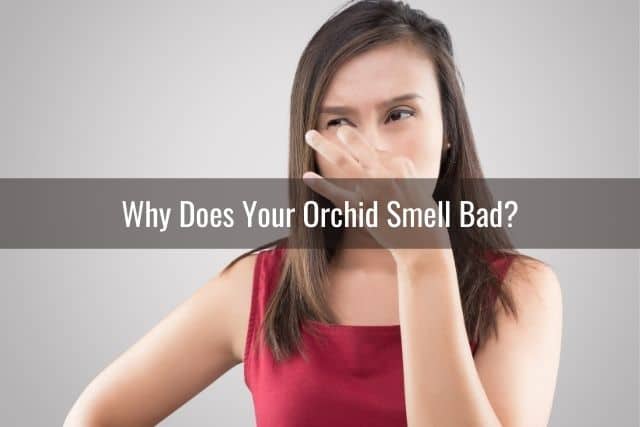
There isn’t one reason why orchids smell bad. Some orchids have developed a nasty odor to attract insects. Insects such as flies, gnats, and beetles are attracted to unpleasant odors.
For example, Bulbophyllum beccarii smells like a decaying animal to attract flies. Since these insects look for food in dead and decaying flora, the orchids are reddish-brown or dull green.
An unpleasant orchid scent can be due to natural adaptations. These orchids tend to smell the worst a few days after they bloom. You might want to try putting the plant in a glass bell jar or outside for a couple of days. But orchids require air circulation, so do not leave them in the bell jar too long.
Bacterial Infection
Not all orchids smell bad naturally. A smelly orchid could be a sign that something is wrong. Your orchid could have a bacterial infection that is causing the smell.
These are some common bacterial infections and diseases that can cause an orchid to smell bad:
- Erwinia. This bacteria rots the leaves. The leaves will look water-soaked, with yellow halos surrounding the water spots. Seriously stressed plants, especially Phalaenopsis orchids, are especially susceptible to this. Erwinia is a rapidly spreading bacteria and one of the stinkiest.
- Bacterial Brown Spot. If you see water-soaked lesions on a leaf that eventually turn black, you could have Brown Spot. Splashing water on the leaf will cause the disease to spread.
- Leaf Spot. This is another fungal disease. You will first see signs of it on the underside of the leaves. Eventually, the spots turn black or brown and can be seen on both sides of the leaves.
Two fungal infections to be on the lookout for are root rot and black rot. Even though fungal infections generally do not smell, you could get a smelly bacterial infection on top of the fungal infection if not treated correctly.
- Root Rot. Root Rot got its name because it spreads from the roots. A wilting plant with brown or black roots is a sign of root rot.
- Black rot. This fungal disease starts on the leaves and spreads to the roots. Leaves turning purplish brown with yellow edges is a sign of black rot.
A common cause of these conditions is overwatering. Although water needs will vary between orchids, a general rule of thumb is to water no more than once a week.
There are a variety of techniques for watering orchids, but experts agree that orchid roots should never sit in water. Therefore, after watering your orchid, make sure you empty any saucers or trays under your orchid pots.
Also be aware of the possibility that the odor might not even be coming from the plant, but from the potting medium. A potting medium that has broken down and started to decompose will not allow for proper air circulation. It also keeps the plant from getting adequate nutrients. This could lead to bacterial or fungal disease, which would then cause the potting media to smell bad.
Which Orchids Have A Bad Scent?

If you did not get a chance to smell your orchid beforehand, or if it has not yet bloomed, you might want to know which orchids have the worst orchid scent. If that is the case, stay clear of orchids in the Bulbophyllum genus.
These are some of the worst offenders and what they smell like:
- Bulbophyllum echinolabium smells like dog droppings.
- Bulbophyllum orientale. This orchid smells like rotting bananas or apples.
- Bulbophyllum psychoon smells like pond scum or rotting fish.
Perhaps if you were an insect, you might like the smell. Ha!
Does A Phalaenopsis Orchid Have a Scent?
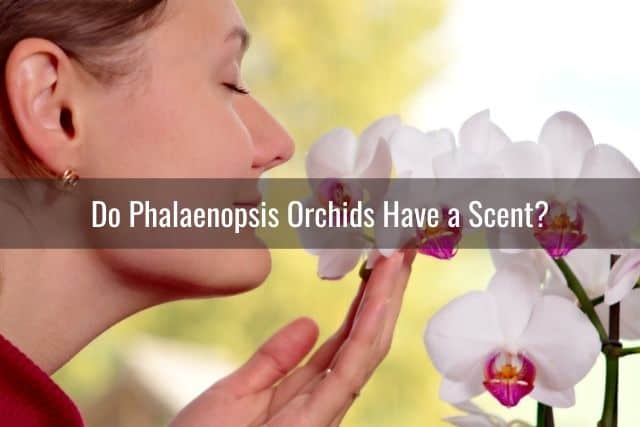
The answer is both yes and no. There are Phalaenopsis orchid species that have scents. Phalaenopsis bellina and Phalaenopsis violacea are two that have a citrus-like fragrance. Phalaenopsis venosa reportedly smells like bacon. However, most Phalaenopsis orchid species, as opposed to hybrids, do not have a scent.
It used to be that most Phalaenopsis orchids sold in stores had no fragrance. That has changed, though. Hybrid Phalaenopsis orchids often have scents, but their fragrances are not predictable. Some may have one of their parents’ scents, while others will have a scent different from both of their parents.
Do Orchids Cause Allergies?
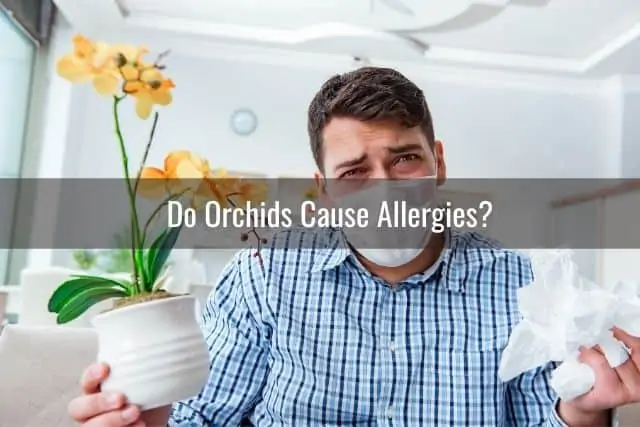
Earlier, I discussed how orchids use scent to attract bees, moths, and flies, and other insects to gather and spread their pollen and seeds. Unlike other plants whose pollen floats in the air to other plants, orchid pollen is sticky and remains in the plant.
As a result, orchids do not cause allergies like other flowers might. This makes orchids ideal plants for allergy sufferers.
However, there are some exceptions. Orchid sap can cause allergic reactions in rare cases. This reaction will cause a patch of dry and itchy skin. An orchid grower might get sap on their skin while cutting and pruning plants. Wearing gloves and long sleeves is an easy way to avoid getting sap on your skin.
People who have allergies to fragrances can buy fragrance-free orchids.
Final Thoughts
The idea that orchids do not have a fragrance or scent comes from the days when Phalaenopsis orchids were a popular genus. Through propagation, even Phalaenopsis orchids are now considered to be fragrant orchids.
Depending on what you are looking for, whether a scented orchid or unscented orchid, there are several varieties of orchid species to choose from, as outlined above. You can expand your orchid collection with some of the scented varieties suggested above and enjoy the scent each blooming season for years to come.
If you enjoyed this article, please pin it and share!
